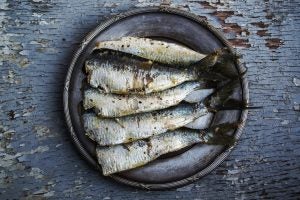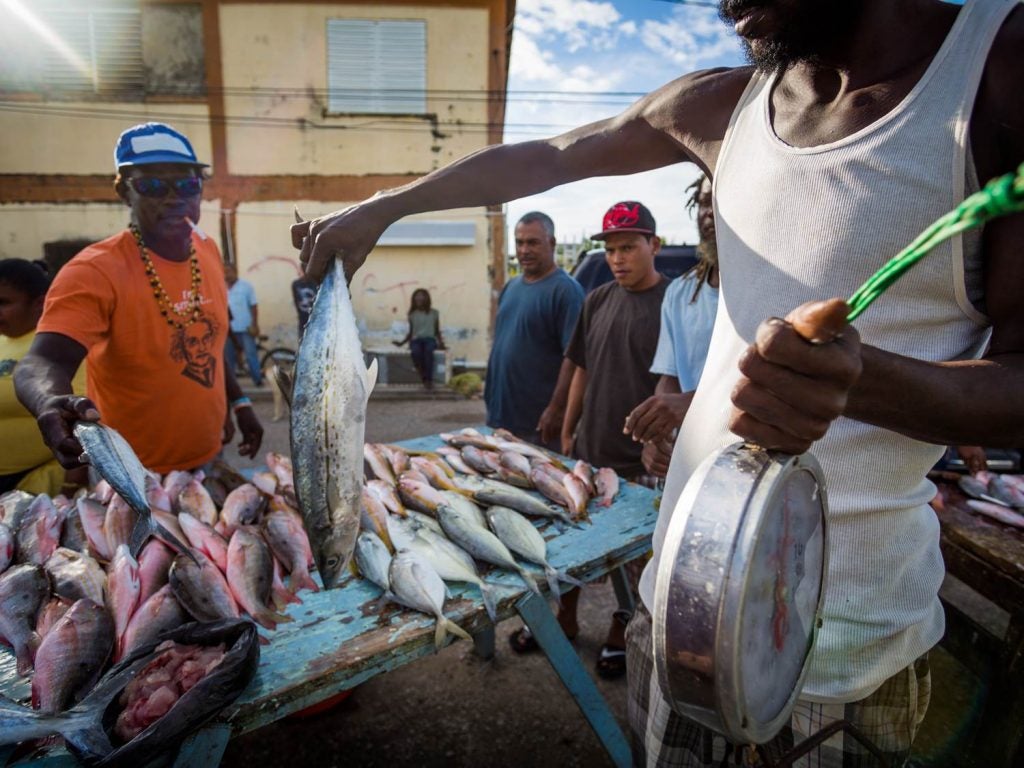One of the things I focus on in my role as a climate scientist is understanding the impact of climate change on ocean fish populations as well as better fishery management practices to help ensure the continued delivery of seafood and livelihoods for millions of people around the world. Critically, the world is confronted with the challenge of increasing access to healthy food for a population that is expected to reach 10 billion by 2050. This summer, as people around the world take to the beaches and coastlines for some relaxation and enjoyment, it’s valuable to remember the major role oceans have in supporting human sustenance.
 Aquatic foods provide an opportunity to increase the availability of nutritious food, if caught or farmed sustainably. Yet fish is largely missing from key global food policy discussions and decision-making. The United Nations’ Sustainable Development Goal 2, Zero Hunger, does not mention fisheries or aquaculture by name, nor does it offer guidance on fish production systems. Fish are also underrepresented in development funding, such as those of the World Bank.
Aquatic foods provide an opportunity to increase the availability of nutritious food, if caught or farmed sustainably. Yet fish is largely missing from key global food policy discussions and decision-making. The United Nations’ Sustainable Development Goal 2, Zero Hunger, does not mention fisheries or aquaculture by name, nor does it offer guidance on fish production systems. Fish are also underrepresented in development funding, such as those of the World Bank.
According to the U.N. Food and Agriculture Organization, the number of malnourished people in the world will increase from 678 million in 2018 to 841 million in 2030 if current trends continue — an estimate not accounting for effects of the COVID-19 pandemic. Fish provide 17% of the animal protein consumed globally and are rich in micronutrients, essential fatty acids and protein essential for cognitive development and maternal and childhood health, especially for communities in developing countries where fish may be the only source of key nutrients. It’s time to look at fish from a food systems perspective and to broaden the conversation on food and nutrition security and equity — especially in the face of climate change.
 Global policymakers and funders can encourage innovative policies and support the role of fish in global food and nutrition security. That’s why my colleagues and I at Environmental Defense Fund, along with other partners, are championing the issue leading up to the United Nations Food Systems Summit, where bold new actions to deliver progress on all SDGs will be explored. The Summit, taking place this September, will awaken the world to the fact that we must work together to transform the way we produce, consume and think about food — and we must make sure aquatic foods are part of that conversation.
Global policymakers and funders can encourage innovative policies and support the role of fish in global food and nutrition security. That’s why my colleagues and I at Environmental Defense Fund, along with other partners, are championing the issue leading up to the United Nations Food Systems Summit, where bold new actions to deliver progress on all SDGs will be explored. The Summit, taking place this September, will awaken the world to the fact that we must work together to transform the way we produce, consume and think about food — and we must make sure aquatic foods are part of that conversation.
A study I contributed to identified four pillars of action to frame fish as food:
Improve metrics. Right now, there are few metrics to assess current contributions of fish to food and nutrition security. Governments and researchers must collaborate to develop better tools to track and raise the profile of fish in broader food and nutrition security policies and investment priorities.
Promote nutrition-sensitive fish food systems. We must expand our focus from rebuilding and conserving fish populations to also include sustainable management of nutrient-rich fisheries.
Govern distribution to create more transparency and equity. Availability, access and stability are key features of food and nutrition security. Even though fish is one of the most traded food commodities in the world, there is limited information about its distribution and links to nutrition security. We must promote equitable distribution of capital and property rights to access fisheries, particularly recognizing the importance of small-scale fisheries and roles women play in fishing and aquaculture sectors.
Situate fish in a food systems framework. Policymakers need the tools to conceptualize fishing and aquaculture as part of our food system. A “fish as food” framing requires a better understanding of the connections among fish production and distribution, terrestrial agriculture and planetary health.
Aquatic foods already provide valuable nutrition and livelihoods to many. Taking these steps will help position sustainable fisheries and aquaculture to feed the world and alleviate malnutrition. Including a nutrition lens when illustrating the multiple benefits of sustainable fisheries production can promote healthy populations, healthy newborns and optimal cognitive development for children. As we enjoy the benefits of the ocean this summer, it’s time we also recognize that aquatic foods are an essential ingredient in ending hunger and malnutrition for billions around the world.










